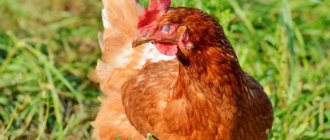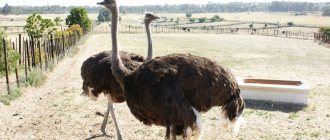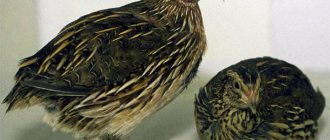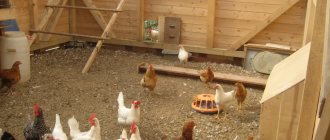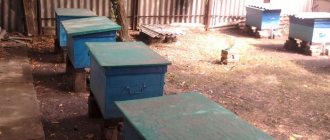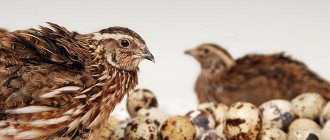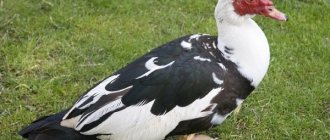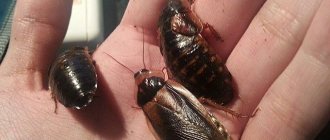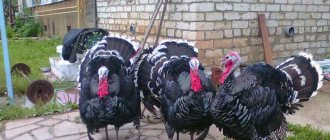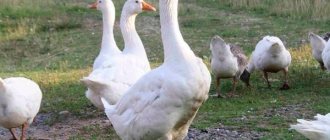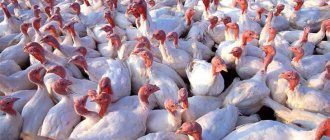Poultry farming » Guinea fowl
0
1769
Article rating
Kira Stoletova
Guinea fowl are domestic birds native to Africa. The name translates as “royal bird”. The history of domestication of this species is very long. They first began to breed it in Europe back in ancient times. Then the domestic stock almost disappeared, breeding resumed only in the 15th century. Until now, the guinea fowl is a rather exotic bird in homesteads, despite the high value of meat and eggs. The main country of breeding is France, they are popular in Germany, Spain and some other European countries.
Guinea fowl
Description of the species
Where does the free guinea fowl live and what kind of bird is it? Guinea fowl are found in the dry highlands of Africa. They inhabit low forests, savannas and steppes covered with bushes, trying to nest in secluded places and dense thickets. The basis of bird nutrition is seeds and plant stems, midges, beetles, worms, small reptiles and rodents.
African wild birds have 23 species, the most famous are the vulture guinea fowl and the grey-speckled guinea fowl, the woodland and crested birds are also known. The second was domesticated, about 20 breeds were bred from it. In some regions, wild guinea fowl are hunted. After all, you can catch a bird with your own hands; in many countries entire populations have been destroyed this way.
In appearance, the bird looks a little like a chicken, a little like a turkey. You can better see what a guinea fowl looks like in the photo. Here is a general characteristic and description of domestic and wild birds of this species:
- The head and neck are completely naked
- There is a horny growth on the back of the head
- The beak is crocheted, medium
- Under the beak two fleshy processes are visible, the so-called “beard” or “earrings”
- Large body
- The back is well rounded
- The tail is lowered down, smoothly connecting to the back
- Wings shortened, with rounded tips
- The color depends on the breed, most often gray-mottled
Many people ask how guinea fowl scream. These birds are quite noisy, their voice is sharp, somewhat reminiscent of creaking or crackling. Not everyone likes the cry of domestic guinea fowl. Therefore, farmers prefer to keep them away from their own homes. For some people, the sound is so disturbing that they even dream about it. The dream book says that listening to the voice of a guinea fowl in a dream portends a divorce, but astrologers can’t come up with anything.
Guinea fowl are semi-wild birds, therefore they require a large space for walking. Males are not aggressive, but when kept with hens they can get into fights with roosters. The roosters usually win the fights, but after a few days the fights happen again. They say that crossing chickens and guinea fowl produces a hybrid, but no one has seen it. Guinea fowl fly well, so the pens for them are built high. You can simply clip the wings.
Conditions for poultry
Only compliance with certain requirements for keeping poultry will allow you to get healthy guinea fowls that will delight you with good productivity indicators. Birds need to be equipped with a roosting house and a walking area.
Arrangement of poultry house and walking yard
Breeding guinea fowl begins with arranging the room where they will be located. To do this, use an outbuilding or build a building, making sure to insulate it and protect it from drafts. Everything in the room should be conveniently arranged so that the birds can lay eggs.
To increase egg laying, bedding is provided indoors - it should not only absorb moisture well, but also provide warmth. It is advisable to treat the floor with slaked lime. To do this, use a kilogram of product per 1 square meter. Only after this is it permissible to lay dry bedding on the floor using sawdust, dried grass or straw.
Guinea fowl are birds that prefer free space and a lot of space for walking, which is why you will need to equip a large aviary
It is especially important that birds have access to a free range during the mating season, as cramped space will cause them to refuse to mate. The aviary in which the birds will roam is covered with a mesh up to two meters high - this is necessary so that the birds do not fly over it
Experienced farmers recommend making a canopy - it will protect the birds from the scorching sun and protect them from rain.
Living conditions
Feeders and drinking bowls must be installed in each enclosure or cage. Birds should always have access to clean, fresh water. In summer, it protects birds from overheating.
It is very important to follow the sanitation and hygiene procedures required for raising guinea fowl. To do this, once a month you should disinfect the poultry house, regularly wash feeders and drinking bowls, places where birds live
Some varieties of guinea fowl need to be separated when breeding and raising, because they are prone to competition and fights. They must be provided with space, otherwise it threatens to reduce egg production. When growing, it is advisable for the farmer to observe the behavior of his charges in order to take appropriate measures in time.
Guinea fowl productivity
Breeding and keeping guinea fowl at home is becoming increasingly popular. Of course, the population of this species is not as large as that of chickens, ducks, geese and even turkeys. But more and more farmers are paying attention to royal birds. The fact is that they have very valuable meat. The breast contains about 95% amino acids; in a broiler this figure is slightly more than 80%. Guinea fowl meat and eggs also have a very high iron content.
The meat tastes like game, soft and tender. For example, French cuisine cannot do without it. Pheasant has similar meat. Eggs have very thick shells and can be stored at 10°C for up to six months. In addition, guinea fowl eggs are very healthy.
The productivity of royal birds on the farm pays off, as they are easy to keep and eat little. Here are the main product indicators:
- The weight of a male guinea fowl is 1.6-1.9 kg, a female is 1.5-1.7 kg
- Egg production – 80-180 eggs per year
- Weight of one egg – 40-45 g
- Egg shape is pear-shaped
- The color of the testicles is brown or brown-red, speckled
Guinea fowl begin to lay eggs at the end of February and finish in the second half of September. Egg production begins at 6-7 months and continues until 2-3 years. Therefore, it is recommended to keep the parent flock for breeding guinea fowl at home for two seasons. We must not forget that this species of bird has beautiful decorative feathers. They look especially original in the gray-speckled breed. The main color is dark gray, in the center of each feather there is a white dot surrounded by a black rim.
Of course, the productivity of different types of guinea fowl does not compare with the productivity of other poultry. But you shouldn’t make a hasty conclusion; breeding and growing them is very profitable. The cost of a one and a half kilogram carcass is about 1000 rubles, and a dozen eggs cost 200-300 rubles. We must not forget that storing eggs is permissible for 6 months.
Egg production
Guinea fowl begin to lay eggs at sexual maturity - from 8 months, in some cases - from six months.
Kingbird eggs are beige/pale brown in color, with an average weight of 45 g. They are slightly smaller than chicken eggs, but richer in dry matter, lipids, vitamin A and carotenoids. Eggs have a fairly thick shell, which increases their shelf life.
Guinea fowl egg production is seasonal. Its active period is from April to September. On average, females lay 80-110 eggs per season.
Creating comfortable conditions close to natural will double egg productivity.
Guinea fowl breeds
Over centuries of breeding guinea fowl at home, many breeds have been developed. They differ from each other in color and plumage pattern, live weight, and egg production. Most varieties are adapted to cold climates. Below are the characteristics of guinea fowl breeds and a brief description of them.
Grey-mottled breed
The grey-speckled breed of guinea fowl is the most popular. It is not highly productive, but it is completely unpretentious and has magnificent decorative feathers. They are dark gray in color, with white spots bordered by a black rim. Black stripes are clearly visible on the wings in flight. The earrings under the beak are bright scarlet, and the growth on the back of the head is blue.
The weight of a female speckled guinea fowl is about 1.6 kg, a male – 1.8 kg. They can be distinguished from each other by the fact that the male has a larger head, a more clearly defined tubercle under the beak, and larger earrings. The egg production rate of the gray speckled breed is average, at the level of 80-90 eggs per year, the weight of one egg is about 45 grams. The ability to lay eggs well lasts up to 3 years, then young birds are needed.
White Siberian guinea fowl
The Siberian white guinea fowl is very well adapted to cold weather. The breed was developed on the basis of grey-speckled, descended from albino parents. A distinctive feature of the species is its white matte plumage. Productivity is slightly higher than that of the speckled grey. In a year, she can lay up to 120 eggs; an adult bird weighs 1.6-1.8 kg. If white guinea fowls are given good care and proper feeding, they recover very quickly.
Cream or suede guinea fowl
The breed is very young, it has just begun to be bred. As in the previous case, its ancestor was a speckled gray guinea fowl, in which a mutation occurred. Unlike the Siberian varieties, the feathers on the breast of these birds are a delicate cream shade, on the back they are gray with white speckles, and the neck is bare. This breed is in the process of development and cannot boast of its high production indicators. Weight ranges from 1.5 to 1.7 kg, there are not too many testicles, up to 70-80 pieces per year, weighing up to 45 g.
Blue guinea fowl
The blue domestic guinea fowl is a rare breed with high productivity. The feather of a guinea fowl has a special lilac or blue tint. Against this background, the specks are clearly visible, forming even rows and stripes on the wings. Males weigh 1.5-2 kg, and females weigh 2-2.5 kg. Laying hens lay 120-150 eggs per year, brown in color, with small black dots, with a very hard shell. Testicle weight – 40-45 g. Unfortunately, breeding and keeping this breed at home is not yet popular; it is rarely seen in homestead farming.
Volga white guinea fowl
The white Volga guinea fowl was bred from the white Siberian one. It is especially characterized by good adaptability. The plumage is white, without cream or yellow. The productivity of the Volga variety is average, the weight of birds is from 1.65 kg to 1.75 kg, egg production is in the range of 85-90 pieces per year, individual laying hens can lay 100 pieces. Chick hatching rate is just over 50%.
Zagorskaya white-breasted
The Zagorsk white-breasted guinea fowl also comes from the speckled breed. A distinctive feature of the variety is the white, very lush, uniform plumage on the chest and belly, and light yellow skin. Product indicators are quite good. Females weigh 1.7-1.9 kg, males - 2-2.2 kg. The female carries 120-140 testicles per year and retains these indicators for up to 2-3 years.
Crested guinea fowl
The crested breed of guinea fowl comes directly from a wild ancestor and is quite rare in domestic conditions. On the top of the bird's head there is a beautiful crest of feathers, similar to a cap. The color of the feathers is black. The rest of the head and neck are bare. The plumage on the body is dark with white dots and a blue tint. The beak is blue and its tip is yellow. The weight of the birds is about 1.5 kg, the body length is within 45-50 cm. The number of testicles per year is 55-100 pieces, depending on the maintenance and feeding regime.
Difficulties
Among the main problems of home breeding of guinea fowl are:
- demanding conditions of detention during the mating season;
- mandatory incubation hatching;
- a large percentage of rejected eggs during the incubation process;
- raising chicks in a brooder;
- difficult procedure for clipping wings;
- high activity and naughty nature of the chicks.
Maintenance and care
We told you what a guinea fowl looks like and what breeds can most often be seen in farmsteads. You have received information about the productivity of the species. But it is advisable to learn everything about guinea fowls before bringing these beautiful birds home. Only proper care and maintenance at home can make their breeding cost-effective and profitable. This is especially important for beginning farmers.
Semi-wild birds need to roam freely; cages are not suitable for them. They need a fairly large area, approximately 30 m of territory per individual. The place should be open, with sparse bushes and tall grass. An area in a field or a small meadow is ideal for this. To prevent domestic guinea fowl from flying away, you need to build a two-meter fence around the paddock. If you do not provide the livestock with free range and drive it into a barn, its productivity will drop sharply - the number of eggs will decrease, and the rate of weight gain will decrease. Due to this, cellular maintenance is absolutely unprofitable.
Despite the fact that the guinea fowl is an African bird, it tolerates cold well. The poultry house can be built without heating. No more than 2-3 individuals can live on one square meter. Be sure to provide perches for the royal birds and guinea fowl so that they do not sleep on the floor. The bedding is standard, like for chickens. Its thickness should be about 10 cm. Straw with sawdust and peat is best suited.
The poultry house for keeping guinea fowl at home in the summer can be mobile. In the pen, they make a small house with their own hands with perches, like a large cage, where the birds can hide at night. In the morning they leave the house and graze in the pasture all day. The livestock should be released from the barn for a walk only after the hens have laid eggs. Otherwise, they will lay eggs anywhere and a large number of eggs will simply be lost.
In winter, guinea fowl should be kept in a permanent barn. If you make it heated, you can prevent many diseases, colds and increase the productivity of the herd. But this condition is not mandatory. The lights in the poultry house are turned on at 7 a.m. in winter and turned off at 10 p.m. You can keep this species with other birds; guinea fowl and chickens get along well, and they do well with turkeys. Even in cold weather, birds will benefit from walks in an aviary cleared of snow.
Features of natural incubation
Guinea fowls are reluctant to lay nests, but placing nests in secluded, dark corners of the house using liners can increase the likelihood of nesting. Nesting boxes should be installed at the rate of 1 to 6 individuals, several tiers are allowed - the bird can take off. It is optimal if the dimensions of the nests are 30x40 cm.
A gregarious bird can choose one nest and rush into it with its entire population, without noticing other nesting sites. Or, on the contrary, it can lay eggs in the corner, not paying attention to the nests.
Feeding guinea fowl
The diet of a guinea fowl in a household varies depending on the time of year and the purpose of specific birds (for fattening or for the parent flock). In summer, birds can obtain part of the food on their own. They happily peck green grass, bugs, even hunt small rodents and lizards; the Colorado potato beetle is completely destroyed by guinea fowl. In winter, the basis of the diet is grain, but you should not forget about greens. Here is the approximate daily menu of one individual for the spring months, during the period of intensive egg laying:
- Oats – 20 g
- Wheat bran – 20 g
- Ground barley grains – 20 g
- Chopped millet – 10 g
- Ground corn kernels – 20 g
- Meat and bone meal or dry fish waste – 20 g
- Grated carrots – 20 g
- Hay (clover is best) – 15 g
- Green pine needles – 15 g
- Feeding yeast – 6 g
- Fish oil – 3 g
- Crushed shells – 5 g
- Fresh nettle – 30 g
In winter, the amount of hay is increased to 25 grams per day per individual, since there is no greenery at this time. A very important component of the diet is pine needles, especially in winter. It contains a lot of vitamin A, which guinea fowl need for normal development. At the end of February, vitamin supplements are definitely included in the menu. After the end of the egg-laying period, the amount of food, especially grain, must be cut off so that guinea fowl at home do not become obese. Then their egg production, fertilization of eggs and hatching of chicks will decrease.
The herd must be fed three times a day, in one place and at one time. Then they will stick to the pen and will not run away. It is best to give food at 6, 12 and 16 hours. You can shift this time by 1-2 hours. The menu for the first and last meals is mainly grain, with greens and vegetables for lunch. The more greens a guinea fowl eats in the summer, the better it tolerates the winter. It is added to the diet gradually, eventually reaching almost 10 g per day.
Guinea fowl diseases
It is impossible to tell everything about guinea fowl at home without talking about the pathologies that occur in this species. Timely detection of symptoms and proper prevention can often save an entire livestock. Diseases of domestic guinea fowl are infectious and non-infectious. Infections include the following pathologies:
- Trichomonosis. Caused by the intracellular parasite Trichomonas. It manifests itself as diarrhea, loss of appetite, sick guinea fowl scream quietly, without timely help they die in a few days
- Pasteurellosis. Caused by a bacterium, the main symptoms are gray-yellow diarrhea, inactivity, high fever
- Pyllorosis. Very often the entire flock, both adults and chicks, die from the disease. The birds' behavior changes, white-yellow diarrhea appears, and coordination is impaired.
- Mycoplasmosis. The disease is caused by protozoa in guinea fowl and affects the respiratory tract. The main symptoms are cough, shortness of breath, sneezing, nasal discharge.
- Worms. They are often asymptomatic; in advanced cases, the bird grows poorly and gains weight, loses activity, and feathers become dull.
The most common non-communicable diseases are:
- Dyspepsia
- Avitaminosis
- Ophthalmitis
- Rhinitis
- Gout
If you properly care for your birds, feed them fresh food and keep the chicken coop and aviary clean, they will not get sick. Timely vaccination will protect them from infections. If a dangerous epizootic occurs in the herd, the entire livestock is sent for slaughter. The premises are thoroughly disinfected. Your guinea fowl will benefit if you contact your veterinarian on time. Perhaps the bird can be saved. After all, only a doctor can determine what a guinea fowl is sick with and what it needs for treatment.
Guinea fowl breeding
When raising guinea fowl, the parent flock begins to be selected when the chicks are 6 months old. For 5-6 females, one male is enough to breed an entire livestock. This species has one feature that makes breeding much easier. Females carry fertilized eggs for another 20 days after mating. Even if the male died, fell ill, or was removed from the house, material for incubation can be collected for almost another month.
It is best to take eggs for breeding from a household farm at the end of April or beginning of May. Males mate successfully when the outside temperature rises to 17-20 degrees. Even if the female lays eggs, the eggs are empty until the end of April, and chicks cannot be hatched from them.
Breeding guinea fowl at home can be problematic. The fact is that the maternal instinct in birds is reduced; they do not sit well on the nest indoors. Not all laying hens hatch eggs well. Therefore, a turkey or a large bantam chicken is often used as a brood hen. After laying the eggs, the birds can be trusted to raise the young. It is also possible for guinea fowl to be hatched in an incubator. The conditions are the same as for chicken eggs, only the humidity is slightly increased. Hatching occurs after 21 days.
If a turkey incubates the eggs, the newborn chicks willingly follow her and hide under her wings. The only problem is that the turkey can take the chicks out for a walk in wet weather and the little guinea fowl catch a cold. Therefore, during the rains, the hen and her young are kept indoors, without being released into the enclosure. The chicken is not such a good mother; tiny guinea fowls get used to it worse. But she can also raise the princess’s children. The problem can be solved by manually placing the chicks under the wings of the chicken. After a while, she begins to call them to her, and the chicks calmly run to their foster mother.
Is it possible to keep chickens together?
Guinea fowl can easily coexist in the same poultry house with chickens, but they have certain differences that should be taken into account when arranging joint housing.
The advantage of such cohabitation is the same living conditions. Together they use perches and nests for hatching eggs and require a certain temperature, cleanliness, and air humidity. To create comfortable conditions for their living, it is worth keeping the bedding dry and clean, and providing good heating and lighting.
The same diet allows you to get high-quality meat when preparing one menu for two types of birds, which will reduce the amount of time and effort for cooking. The individuals get along well with each other. Only roosters can cause confusion, and therefore it is recommended to keep birds together from a young age.
Poultry house with chickens and guinea fowls
There are also certain disadvantages of such incubation:
- chickens can live in cages and small poultry houses, and guinea fowl require freedom;
- chickens can breed in a closed space, and guinea fowl only in a paddock;
- chickens and guinea fowl can mate with each other, resulting in hybrids.
Note! The main advantage is the moment of hatching the eggs. Guinea fowls do not like to do this, and therefore chickens often perform their duties.
Feeding and caring for young animals
Most often, farmers buy day-old guinea fowl and feed them until autumn. With this technique, care should be taken to properly care and feed the young animals. The room where chickens live should be dry and with good lighting. In the first 3 days, the temperature there should be maintained at 35 degrees, until the 10th day - 31 degrees, until the third week it is reduced to 27 degrees, and at 30 days the young animals feel good indoors at 21 degrees. The best way to raise guinea fowl chickens is to use a brooder.
In the first days, guinea fowl are fed boiled eggs and steamed millet. Then finely chopped greens, sprouted grains, and wheat bran are added to the menu. At three weeks you can already give ground raw wheat, oats, and barley. By the age of one month, the young animals are transferred to adult feeding. For normal development, the diet includes fish oil and flour, yeast, and vitamins. Guinea fowl grow quickly, already at three months they weigh more than 1.5 kg, and at 4 months in most breeds they reach full weight.
How much do daily allowances for guinea fowl cost? The price depends on the breed and the number of individuals purchased, ranging from 120 to 200 rubles per head. A hatching egg costs 60-70 rubles. The price of adult guinea fowl is 500-700 rubles per individual. If you take into account the high price of meat and the low consumption of feed (about 3 kg per kilogram of live weight), you can understand how profitable it is to keep guinea fowl at home. It is best to start breeding by purchasing day-old chicks (at least 20 pieces), forming them into a parent flock and getting your own offspring the next year.
Business profitability
The right choice of business development strategy is the main rule of a successful entrepreneur. The decision to breed guinea fowl for the purpose of further selling their products should be based on a well-written business plan. To compile it, the marketing situation on the market is assessed, the costs of maintaining the flock and the possibility of selling poultry products are taken into account.
Let's calculate how much we can earn if we breed guinea fowl on our property (with the permission of our neighbors) in an existing building, such as a chicken coop.
Conditions for calculation. We buy 20 day-old chicks in April, the cost is 120 rubles each. As they grow, we select 5 females and one male; the rest of the birds, starting in September, are sold at 400 rubles per kilogram. We believe that guinea fowl will start laying eggs only next year; the average number of eggs from each female is 120. The first 20 eggs from each female are used to raise chicks; the remaining 100 eggs, as they arrive, are sold either as eggs or as day-old chicks.
